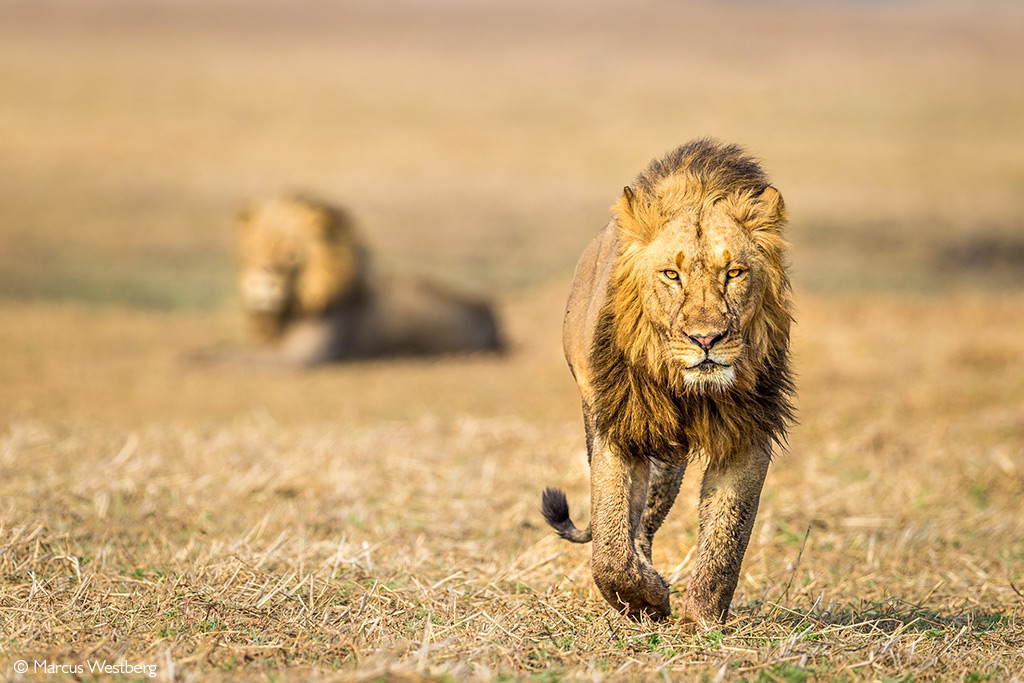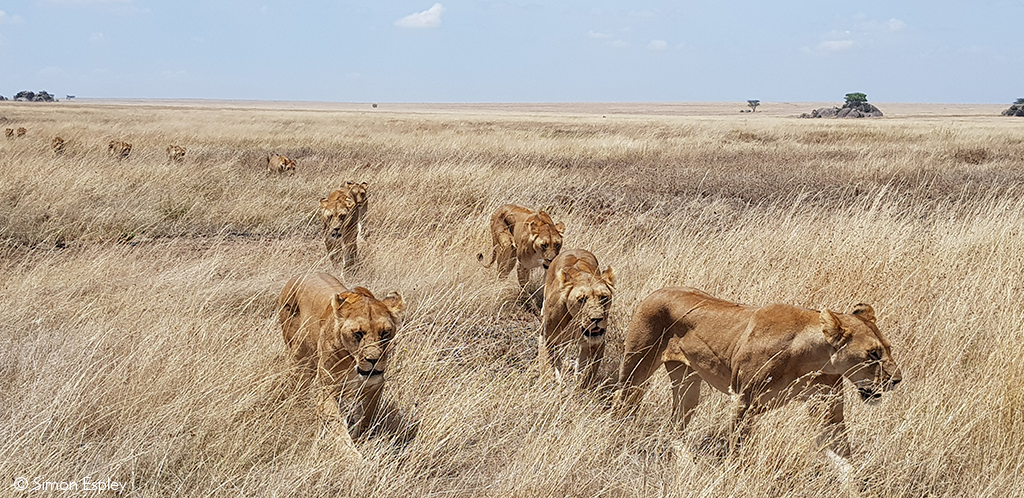
The African lion is an iconic symbol of Africa, associated with strength and majesty. In reality, the kingdom of the lion is under pressure. In a recent study, researchers have given us greater insight into what is causing concern for the remaining populations of the African lion.
Paws for thought
- The African lion is classified as vulnerable on the IUCN Red List of threatened species;
- There has been a 36% reduction in the species range in the last 21 years;
- Population surveys estimate that ca. 20,000 to 25,000 lions are left in the wild;
- There are only 62 remaining free-ranging wild lion populations remaining in Africa, less than half of which have over 100 lions;
- Lions are now confined to 8% of their historic range distribution; and
- There are marked differences in how well lions do across different populations. Lion populations in Botswana, for example, are thriving and have increased by 12%, but in West and Central Africa, populations have declined by a worrying 66%.
The bigger picture
Conservationists have for years described the risk of extinction for a species through quantifiable metrics, such as a change in habitat, numbers of mortalities, or percentage of the animal’s population in protected areas. But in a new study, Nicholson et al. (2023) point out that these measures are often based on assumptions. For example, just because an area has been declared a protected area by the authorities does not mean that protection is automatically conferred. Governance of protected areas varies across space and time; some reserves do not or cannot enforce this protection. Some countries do not have the resources to maintain anti-poaching units or effectively manage human-wildlife conflict. Context is always critical. In a reserve surrounded on all sides by livestock farmers, lions are more vulnerable to the consequences of human-wildlife conflict (due to lions preying on livestock) than lions in a reserve buffered by other reserves. Lions in a reserve in countries with stable political environments are more secure than lions in states facing political instability.
To integrate this notion of context, the authors introduce the concept of ‘fragility’. Fragility is, in essence, the opposite of resilience. The authors define fragility as the measure of how vulnerable to damage or harm a species is. Resilient populations bounce back after an adverse event. But fragile populations don’t.
Ecological fragility refers to those ecological factors that make a lion population vulnerable, such as lack of connectivity to other lion populations (this would impact genetic diversity and resilience to disease, etc). They then introduce the concept of socio-political fragility as defined by factors such as human population numbers, political stability and environmental policy. This novel way of assessing the fragility of different African lion populations gives conservationists a more realistic way of understanding which populations face high risk.


Where are the fragile lion populations?
Ethiopia’s Maze National Park lion population is ranked the most ecologically fragile due to its exposure to high cattle and human densities within the lions’ range. Other ecologically fragile geographic populations include Lake Manyara, Nechisar and Toro-Semiliki. In contrast, the lion populations in the Selous-Niassa (Tanzania and Mozambique) and Kavango-Zambezi (Angola, Botswana, Namibia, Zambia and Zimbabwe) systems are considered the least ecologically fragile.
When the socio-political context is considered, however, the analysis reveals that the lion populations in Somalia and South Sudan are considered the most fragile, as they score low in governance and conservation-policy categories. From a socio-political perspective, South Africa, Namibia and Botswana lion populations are considered the least fragile.
The combination of ecological and socio-political fragility gives a different index; thus, a different perspective emerges. Overall, Somalia’s lion populations were evaluated as being the most fragile, Botswana’s the least. Sadly, almost half the countries that scored a high overall fragility comprise 39% of the lion’s range and were primarily located in the northern parts of Africa. Poor governance, population pressure, conflict and poverty are prevalent in these northern countries, and these factors hinder effective conservation.
Using the lens of context to describe the fundamental fragility of this species allows conservationists to make different choices in prioritising scarce resources. For example, the DRC and Cameroon had similar high overall fragility scores, but other factors drove their scores. Cameroon lions had more increased ecological fragility, whereas DRC lion populations were considered fragile because of high political conflict and instability. Therefore, conservationists could decide to direct resources into working with the ecological fragility in Cameroon, which would arguably have more impact and be more accessible than expending resources in the high-risk environment in the DRC.

Choosing which lions to save
Conservationists understand how to deal with ecological fragility. However, addressing the more complicated context of social and political barriers that limit effective lion conservation will require a different set of tools and encompass a far more comprehensive range of stakeholders. This would require levels of involvement from stakeholders such as policymakers, local traditional leadership, international role players and law enforcement. But tackling anthropogenic pressures at a national scale can take a long time.
The study raises interesting philosophical questions about our choices in conservation. Do we direct all our resources into the low-hanging fruit, i.e., the lion populations in stable, well-resourced countries? Is this a feasible long-term strategy? Do we ignore the small (<250) lion populations found in just under half of all lion-range countries in favour of larger populations? How do we do less harm by redirecting resources? Considering that the cost of effective lion conservation would exceed US$3 billion per year, based on rough estimates, how is raising this funding feasible when almost all African lion-range countries are in the top 50% (highest poverty) of the Global Multidimensional Poverty Index?
What is clear from the study is that more systemic interventions are needed in the lion conservation arena. This paper provides the first step in understanding more about the contextual threats facing our rapidly dwindling populations of the roaring icon of Africa.
You can help save wild, free-roaming lions by supporting our “Collar a lion” campaign – in partnership with the Southern African Conservation Trust. Read more here.
References
Nicholson, S.K., Dickman, A., Hinks, A. et al. (2023) “Socio-political and ecological fragility of threatened, free-ranging African lion populations,” Communications Earth & Environment 4, 302.
Further reading
There has been a 75% decline in Africa’s iconic predators in just five decades. Read about Africa’s vanishing lions here.
Research shows that translocating lions does not reduce conflict. Read about the research here.
Accurate counts of lions are essential to lion conservation. Read about the science of counting lions here.
To comment on this story: Login (or sign up) to our app here - it's a troll-free safe place 🙂.![]()






